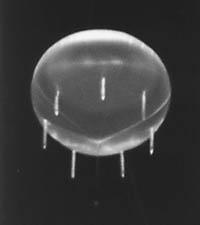Looking for the antimaton the globe
Last August they launched NASA's largest balloon, equivalent to the height of the 60-foot building, to study the high layers of the atmosphere. The idea is to capture antimating particles. He was carrying a 2-ton Japanese device and had to climb to 32 km high. Antimatter has a charge against conventional matter.

That is, if protons have a positive charge, antiprotons have a negative charge. When materials and antimaterías are found they destroy each other releasing abundant energy, and their research is important to know the energetic processes that operate in the Universe. The results indicate that he had caught several antiprotons, but although this is not abundant, it is not surprising, as they can occur by collision between conventional particles of space. It is therefore about finding more complex particles formed by antimony. For example, antihelium, which is difficult to create by shock and, therefore, would indicate that among its components there would be systems with antihelium or galaxies. In the research carried out in the last six years there have been no evidence of antihelium, reinforcing the theory that there is no antimony in the nearest Universe.





